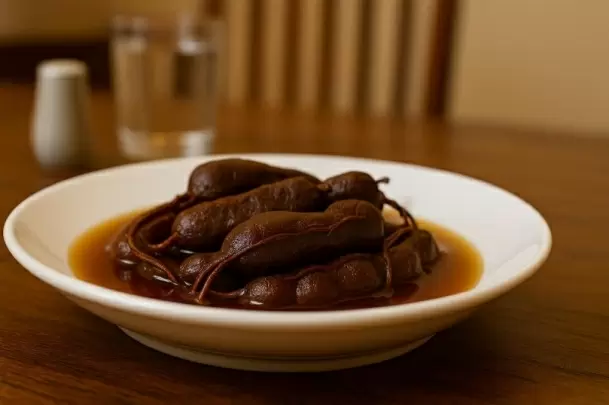Puzhi Payani: The Lost Tamarind Delicacy of Kanyakumari
27-October-2025

In the good old days of my childhood in Chennai, we often visited my grandparents’ village in Kanyakumari district. On some evenings, we would enjoy a delicious homemade snack called Puli Payani.
It was made with fully ripe tamarind with the seeds and fibrous veins still intact, only the outer shell removed. The tamarind was soaked in a sweet liquid that I knew then as palmyrah juice, though I did not understand how exactly the dish was made.
Recently, I spoke with my uncle, Paulraj Chithappa, and learned more details about this dish, which I am told is now extinct. It is no longer made in the region because palmyrah juice is not available.
Most of the palmyrah trees have been cut down to make space for other crops and plantations. The trees disappeared because there is no longer an economy around them.
There are no palmyrah climbers anymore. It is a far cry from the days when at least a dozen men would climb the trees in our farms to extract the palmyrah juice called pathaneer. The juice was then boiled and processed to make karuppatti or palm jaggery.
The extraction of this juice once supported many families and provided a steady income. It added to the earnings from tamarind, jackfruit, mango, and the harvest from the paddy fields.
Life in those times was self-sustaining in every way. Most houses would have a few cows whose dung was thrown into a pit, and all the kitchen and organic waste was added to it to make natural manure for the fields.
Coming back to Puli Payani, I learned that it was made from pathaneer, the sweet and unfermented sap of the palmyrah tree. The drink is natural, refreshing, and nutritious.
To make Puli Payani, the pathaneer was boiled until it reached a thick, semi-solid stage just before it turned into jaggery. This syrup was poured into an earthen pot filled with ripe, sweet tamarind, stripped of its shell but still clinging to its fibres. The pot was sealed with a cloth and left undisturbed for one or two months.
After that time, the Puli Payani would be ready to be opened and served.
This delicious dish was enjoyed for generations until changing lifestyles and the decline of the palm economy brought an end to this self-sustaining way of life. Fortunately, a revival is slowly taking shape as young people return to traditional livelihoods and begin to create such premium products once again.
Hopefully, the Kanyakumari Puli Payani will be reinvented and even receive a GI tag one day.
The author, P C Vinoj Kumar, is the Editor of The Weekend Leader
Advertising Icon Piyush Pandey Dies at 70; Tributes Pour In from Industry Leaders
11 Dead, 9 Missing as Andhra Pradesh Bus Catches Fire After Collision in Kurnool
Mandhana, Rawal Smash Centuries as India Post 340/3 Against New Zealand
Massive Fire Breaks Out at Printing Press in North Kolkata, Amherst Street Printing Press
Mahagathbandhan Likely to Announce Tejashwi Yadav as CM Face Ahead of Bihar Polls









